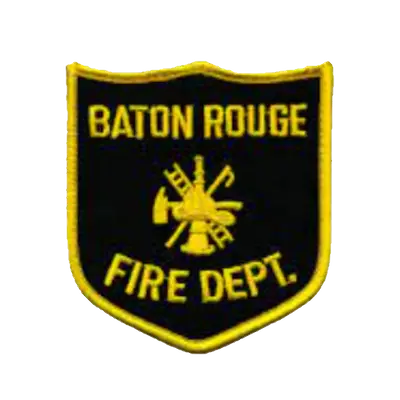In today’s digital-first world, the power of content marketing transcends industries, serving as a vital communication and engagement tool. For public safety agencies, content marketing is not just about outreach or brand visibility; it’s a matter of public interest and safety. These agencies, responsible for protecting the community and providing critical information, find themselves in a unique position where effective communication can have far-reaching impacts on public welfare.
Content marketing in the public safety realm is fundamentally about disseminating vital information in a manner that is accessible, engaging, and trustworthy. Unlike commercial entities, whose primary aim is often sales-driven, public safety agencies use content marketing to inform, educate, and prepare the public for various scenarios, ranging from everyday safety measures to emergency responses. The approach combines the art of communication with the responsibility of public service.
This blog aims to delve into the nuances of how public safety agencies can uniquely leverage content marketing. We will explore the different facets of this strategy, from building trust with the community to handling crisis communication and ensuring digital inclusivity. The goal is to highlight the critical role of content marketing in not just disseminating information but also in shaping public perception and behavior toward safety.
By understanding these dynamics, public safety agencies can optimize their content strategies to better serve and protect their communities, fostering a more informed and prepared public.
The Role of Content in Public Safety
Beyond Information Dissemination: Content as a Lifeline
In public safety, content serves as much more than a tool for information dissemination; it acts as a lifeline connecting public safety agencies with their community. Unlike traditional marketing, where the primary focus is on promoting products or services, content marketing for public safety is deeply rooted in ensuring the well-being and safety of the public.
Educational Outreach and Awareness
One of the core roles of content in public safety is education. Agencies utilize various platforms to inform the public about safety protocols, emergency procedures, and preventive measures. This includes reactive measures for existing threats and proactive dissemination of information to prevent incidents. For instance, fire departments sharing content on fire prevention during dry seasons effectively reduces the risk of wildfires.
Real-Time Information Sharing
In times of crisis, the speed and accuracy of information can mean the difference between safety and peril. Public safety agencies use content to provide real-time updates during emergencies. Whether it’s a natural disaster, a public health crisis, or a security threat, timely and accurate content helps manage the situation effectively, guide the public on immediate steps to take, and prevent panic.
Building Community Relationships
Content marketing also plays a pivotal role in building and maintaining relationships with the community. Consistent and transparent communication helps in establishing trust. This trust is crucial, especially when conveying critical information or instructions during emergencies. Agencies that effectively engage with their communities often see higher compliance with safety guidelines and more robust public cooperation.
Diverse Content for Diverse Needs
The diverse nature of public safety issues requires a multifaceted content approach. Agencies must tailor their content to suit different scenarios – from instructional videos on CPR to social media posts about road safety and detailed guides on disaster preparedness. This variety ensures that crucial information reaches and engages a broader audience.
The Balancing Act: Accuracy and Accessibility
Public safety content must balance being easily understandable and accurately detailed. Misinformation, or overly technical information, can lead to confusion and harm. Content should be clear, concise, and accessible to people from various backgrounds. This also includes ensuring content accessibility for individuals with disabilities, such as using closed captions in videos or screen reader-friendly web content.
Content as a Two-Way Street
Finally, content marketing for public safety is not just about broadcasting information; it’s about creating a dialogue. Public feedback and engagement are invaluable for agencies to gauge the effectiveness of their communication and to understand public concerns. Social media, for instance, allows for real-time interaction, providing a platform for direct communication between public safety agencies and the community.
Building Trust with the Community
Establishing Credibility Through Consistent Communication
Trust is the cornerstone of any relationship, and this holds particularly true for public safety agencies and the communities they serve. In public safety, trust translates into public compliance, cooperation, and support—factors critical in managing emergencies and ensuring public welfare. Effective content marketing plays a pivotal role in building and reinforcing this trust.
Transparent and Honest Communication
One of the critical strategies for building trust is through transparent and honest communication. Public safety agencies must ensure that the information they disseminate is factual, up-to-date, and transparent. This includes openly discussing potential risks, providing clear guidelines, and promptly admitting and correcting any misinformation. Honesty in communication informs the public and establishes the agency as a credible and reliable source of information.
Success Stories and Case Studies
Sharing success stories and case studies where the agency’s intervention has positively impacted the community can be powerful in building trust. These narratives provide tangible evidence of the agency’s capabilities and commitment to public safety. For instance, a fire department sharing a story about a successful rescue operation or a police department highlighting a community outreach program can bolster public confidence in their work.
Engaging with Community Feedback
Engagement doesn’t end with broadcasting information; it extends to listening to the community’s feedback. Agencies should encourage and facilitate a two-way communication channel where the public can voice concerns, ask questions, and provide feedback. This can be achieved through social media interactions, community meetings, and feedback surveys. Acknowledging and responding to public concerns builds trust and helps agencies tailor their strategies to meet community needs better.
Educational Initiatives
Educational initiatives, particularly those involving direct community involvement, effectively build trust. Workshops, seminars, and training programs on public safety create opportunities for agencies to interact directly with the community, providing a platform for engagement and education. These initiatives also demonstrate the agency’s commitment to empowering the community with knowledge and skills for their safety.
Fire departments are increasingly adopting effective online strategies to complement their educational initiatives. You can explore some of these strategies in our post on ‘Effective Online Strategies for Fire Departments.’ Learn how digital platforms can enhance training programs and community outreach efforts.
Consistency in Communication
Consistency in communication frequency and quality helps build a reliable and trustworthy image. Regular updates, consistent messaging across different platforms, and a steady presence during non-crisis and crises reinforce the agency’s commitment to the community’s safety.
Public safety agencies can achieve this consistency by utilizing various communication tools and strategies, including social media, website updates, and email newsletters. These channels allow agencies to maintain an ongoing dialogue with the community.
As part of this ongoing communication effort, it’s essential to provide transparency regarding the agency’s activities. One way to achieve this is by sharing regular updates on the agency’s operational statistics, including run totals. This data not only showcases the agency’s dedication to accountability but also provides valuable insights into its responsiveness to community needs.
Curious about how public safety agencies effectively share their run totals and engage with the community through data-driven communication? Dive into our insightful blog post on ‘Balancing Bragging Rights and Accountability: Sharing Run Numbers on Social Media.‘ Explore how agencies use data to enhance their consistency in communication, engage with their communities, and further strengthen public safety measures.
By maintaining a consistent and open line of communication, public safety agencies can reinforce trust, demonstrate their commitment to transparency, and foster a stronger bond with the community they serve.
Leveraging Local Influencers and Partnerships
Collaborating with local influencers and community leaders can amplify the reach and impact of the agency’s content. These individuals often hold trust within their communities and can act as valuable partners in disseminating information and reinforcing the agency’s messages.
In summary, building trust with the community through content marketing is about much more than just sharing information; it’s about establishing a reliable, credible, and responsive presence. It’s about creating and maintaining a bond with the community based on mutual respect, honesty, and cooperation.
Building Trust with the Community is at the core of every public safety agency’s mission. A crucial aspect of trust-building is effective branding. In our post on ‘The Importance of Branding for Public Safety Agencies,’ we delve into how a strong and consistent brand identity can instill confidence, reliability, and a sense of security among the public.
To learn more about how branding plays a vital role in fostering trust within the community, read our article on The Importance of Branding for Public Safety Agencies. Your agency’s brand is not just a logo or a slogan; it’s a promise to the community that their safety is your top priority.
Engagement and Education
Creating a Culture of Safety through Informative Content
Engagement and education are crucial components of public safety, serving as proactive measures to enhance community awareness and preparedness. Through strategic content marketing, public safety agencies can cultivate a safety culture, making the community an active participant in safety measures rather than a passive recipient of directives.
Leveraging Multiple Platforms for Diverse Engagement
To effectively engage a broad audience, public safety agencies need to utilize a variety of platforms. Each platform offers unique opportunities for engagement:
- Social Media: Platforms like Twitter, Facebook, and Instagram are ideal for quick updates, safety tips, and interactive Q&A sessions. They also provide a space for the community to share their experiences and insights.
- Blogs and Websites: In-depth articles and posts on public safety websites or blogs can provide comprehensive information on emergency preparedness, first aid techniques, or understanding public safety protocols.
- Videos and Webinars: Video content, including instructional videos, documentaries, and webinars, can be highly effective in demonstrating safety procedures, sharing stories, or conducting virtual training sessions.
Educational Content: Beyond the Basics
Educational content should not only inform but also empower the audience. This involves going beyond basic information to:
- Demonstrate Practical Applications: Showing real-life applications of safety measures makes the content relatable and actionable.
- Interactive Learning: Engaging the audience through quizzes, interactive guides, or virtual simulations can enhance learning and retention of safety practices.
- Youth-focused Education: Tailoring content for younger audiences, such as school safety programs or youth-focused workshops, ensures that safety education starts early.
Storytelling as a Tool for Engagement
Storytelling can be a powerful method to convey important safety messages. Sharing real stories of emergencies, rescues, and the impact of preparedness can resonate more deeply with the audience, creating a more lasting impression than mere facts and figures.
Community Participation and Feedback
Encouraging community participation in public safety initiatives enhances engagement. This can include:
- Community Safety Programs: Inviting community members to participate in safety drills, volunteer programs, or awareness campaigns.
- Feedback Mechanisms: Providing channels for the community to share their feedback on public safety issues, suggestions for improvement, and personal experiences.
Cultural Sensitivity and Inclusivity
Content should be culturally sensitive and inclusive, ensuring that it resonates with the diverse makeup of the community. This involves:
- Language Accessibility: Providing content in multiple languages to cater to non-English speakers.
- Culturally Relevant Examples: Using examples and references that are culturally relevant and relatable to different community groups.
Engagement and education through content marketing are vital for public safety agencies. They not only disseminate important information but also foster a sense of community involvement and responsibility toward safety. Using various platforms and creative content strategies, these agencies can create an informed, prepared, and proactive community.
Crisis Communication
Navigating the Challenges of Emergency Messaging
In the high-stakes environment of public safety, effective crisis communication is vital. The ability to convey critical information swiftly and clearly during emergencies can significantly impact the outcome of a crisis. Public safety agencies must be adept at navigating the unique challenges of emergency messaging, where the right information at the right time can save lives.
The Principles of Effective Crisis Communication
Effective crisis communication is underpinned by several fundamental principles:
- Speed and Accuracy: In an emergency, timeliness is crucial, but not at the expense of accuracy. Rapid dissemination of accurate information can help manage the situation and prevent the spread of rumors or panic.
- Clarity and Simplicity: During a crisis, people are likely to be stressed and may have difficulty processing complex information. Messages should be clear, concise, and jargon-free to ensure widespread understanding.
- Consistency: Consistent messaging across all channels is crucial to avoid confusion. The information should be uniform and coherent, whether social media, press releases, or emergency broadcasts.
Utilizing Digital Platforms for Rapid Dissemination
Digital platforms play a critical role in crisis communication:
- Social Media: Platforms like Twitter and Facebook allow for real-time updates, reaching a broad audience quickly. They are also helpful in countering misinformation and providing ongoing updates.
- Mobile Alerts and Apps: Push notifications and mobile apps can be used for immediate alerts, especially in localized emergencies like natural disasters or lockdowns.
Preparing for Crisis Communication
Preparation is key to effective crisis communication. This involves:
- Crisis Communication Plans: Having a well-defined crisis communication plan in place, which includes designated spokespersons, pre-approved messages for different scenarios, and a clear chain of command.
- Regular Drills and Training: Regular drills and staff training ensure everyone knows their role and responsibilities in a crisis.
Building Relationships with Media
Collaborating with media outlets before a crisis can aid in effective information dissemination when an emergency arises. Establishing a rapport with local and national media ensures accurate information is broadcast and reaches a broader audience.
Crisis communication is a critical aspect of public safety content marketing. It requires a well-planned and executed strategy prioritizing speed, accuracy, and clarity. By leveraging digital platforms and preparing in advance, public safety agencies can effectively manage communication during emergencies, ultimately aiding in the safety and well-being of the public.
Digital Accessibility and Inclusivity
Ensuring Information Reaches Everyone
In public safety, ensuring that every community member has access to vital information is not just a matter of effectiveness but equity. Digital accessibility and inclusivity are vital components in achieving this goal. Public safety agencies must ensure their content is accessible to all, including people with disabilities, non-native language speakers, and those with limited digital literacy.
Overcoming Language Barriers
Language can be a significant barrier to accessing critical safety information. To address this:
- Multilingual Content: Providing content in multiple languages, especially in areas with a diverse linguistic population, is essential.
- Translation Services: Offering real-time translation services or having key documents in different languages can greatly enhance accessibility.
Catering to Diverse Abilities
Ensuring content accessibility for individuals with disabilities is crucial:
- Visual Accessibility: Content should be compatible with screen readers for people with visual impairments. Using alt text for images and providing transcripts for videos are important steps.
- Auditory Accessibility: Offering closed captions and sign language interpretation in videos ensures that individuals with hearing impairments can access the information.
Digital Literacy Considerations
Not all community members may be equally comfortable with digital technology. To ensure inclusivity:
- Simplified Digital Interfaces: User-friendly and intuitive digital platforms can help those with limited digital skills.
- Offline Alternatives: Providing information in traditional formats like flyers, public announcements, and community meetings ensures that those without digital access are not left out.
Culturally Sensitive Communication
Content should be culturally sensitive to resonate with the diverse makeup of the community. This involves:
- Cultural Relevance: Using culturally relevant examples and references in content.
- Community Consultation: Engaging with community leaders and members to understand cultural nuances can guide the creating of more inclusive content.
Continuous Improvement through Feedback
Regularly seeking and incorporating feedback on accessibility and inclusivity can lead to continuous improvement in content strategies. This can be achieved through surveys, community forums, and feedback channels.
In summary, digital accessibility and inclusivity are critical for public safety agencies to ensure their content marketing efforts reach and resonate with the entire community. Agencies can create a safer, more informed, and inclusive community by embracing these principles.
Measuring Impact and Analytics
Gauging the Effectiveness of Public Safety Content
For public safety agencies, understanding the impact of their content marketing efforts is crucial for continuous improvement and effective communication. Using analytics and impact measurement tools can provide valuable insights into how well the content reaches and engages the audience and, more importantly, how it influences public safety awareness and behavior.
Key Metrics for Impact Measurement
Several metrics can help in assessing the effectiveness of content marketing:
- Reach and Engagement: These metrics, including views, shares, likes, and comments, indicate how broadly and deeply the content engages the audience.
- Website Traffic: For agencies with online platforms, analyzing website traffic, page views, and user behavior can provide insights into what content is most sought after and how users navigate information.
- Feedback and Surveys: Direct feedback from the community through surveys and feedback forms is invaluable in gauging the effectiveness of the content and understanding public perception.
Utilizing Analytics Tools
Leveraging analytics tools can provide a comprehensive understanding of content performance:
- Social Media Analytics: Tools provided by social media platforms can help track engagement and reach on these platforms.
- Web Analytics: Tools like Google Analytics can offer detailed insights into website traffic, user behavior, and content engagement.
Adapting Strategies Based on Data
Analytics and feedback should not just be used for measurement but also for strategy refinement:
- Identifying Successful Content: Understanding what types of content resonate with the audience can help focus efforts on similar formats or topics.
- Addressing Gaps: Analytics can reveal gaps in reach or engagement, prompting agencies to adapt their strategies to better meet the needs of different community segments.
Measuring the impact and using analytics is vital for public safety agencies to ensure that their content marketing efforts are effective and truly beneficial for the community. By continuously monitoring, analyzing, and adapting their strategies based on data, agencies can enhance their communication and engagement, ultimately contributing to a safer and better-informed public.
Conclusion: Embracing the Digital Evolution in Public Safety
In conclusion, integrating content marketing into public safety strategies represents a significant step forward in how agencies communicate, engage, and educate the public.
By leveraging diverse digital platforms, focusing on accessibility and inclusivity, and utilizing analytics for continuous improvement, public safety agencies can disseminate vital information more effectively, build trust, and foster a proactive safety culture within the community.
As digital technologies continue to evolve, the potential for innovative content strategies in public safety is immense, opening new avenues for community interaction, education, and, ultimately, enhanced public safety.














































